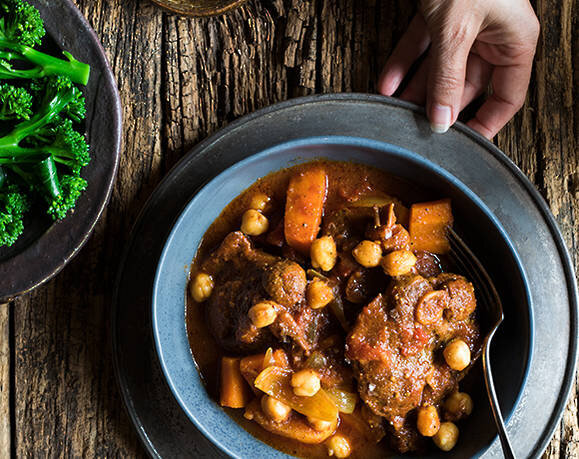HOME > NUTRITION > FACTS & ADVICE > EATING ON A BUDGET
For many of us, our food bill makes up a large part of our weekly expenses. Many believe that to have a healthy diet you need to spend the big bucks and have a full fridge 24/7, however this is not the case at all. A healthy diet does not need to break the bank, in fact there are many low-cost, healthy foods that can help you meet all of your nutrition requirements.
When compared to vegetables or potatoes, meat is often the more costly item on a dinner plate, however we like to say lean red meat packs a nutrition punch, providing a lot in a little. What this means is a moderate serving of beef or lamb, roughly a palm-sized portion, contributes significantly to our daily protein, vitamin and mineral needs. For example, a 100g of lean cooked rump steak provides at least a quarter of an adult’s daily needs of iron, zinc, vitamins B12, B6 and B3 (niacin) that contribute to health and well-being.
Even when shopping on a budget you can keep meat on your grocery list. In winter, cheaper cuts of red meat like chuck and blade steak become meltingly tender when slow-cooked and mince is a year-round favourite. When choosing cheaper cuts of meat you’re not compromising on taste or nutritional value, so you can feel confident when feeding your family. For example click here to see mince’s nutritional punch.
Here are some tips for saving money on healthy food and shopping on a budget:
Make your meals at home rather than buying from cafes, bakeries or restaurants. You will quickly see how much you can save.
Plan meals for the week and write a shopping list. It will stop you buying unnecessary extras.
If you have the freezer space and can afford to, buy more than you need and freeze the extra in smaller portions. A large pack of meat on special, split into smaller amounts into snaplock bags, will be cheaper than buying lots of smaller packs. Be sure to date the packs, aiming to eat the defrosted frozen red meat within 6 months for best quality.
Butchers are there to help you. Ask their advice on which meat cut is best for your recipe.
Mince, lamb shoulder chops, beef shin, chuck, schnitzel, topside steaks and casserole meat offer value for money, ideal for family meals.
Beans, such as baked beans, lentils, rice and pasta are cheap and help make a dish go further. They are also a great source of protein and fibre. Add a can of baked beans or lentils to a pasta bake or shepherd's pie and you'll feed an extra mouth or two.
Shop seasonal. Shopping for seasonal produce brings the price down due to high demand.
Don’t forget about canned or frozen foods. Frozen or tinned fruit and veges are a great budget-friendly alternative. Frozen vege is great steamed straight out of the packet or added to stir-fries, casseroles or curries.
Try to avoid food shopping on an empty stomach – if you’re hungry you’re bound to think up any excuse to squeeze a couple of extra non-essential food items into your trolley.
Look out for specials – Quality Mark New Zealand beef and lamb are often on special at local supermarkets and butcheries.
Talk to your family about foods they enjoy eating and find ways to make those meals more healthy and cost-effective.
Food waste can be a big cost over time on the family budget and for the country. New Zealanders throw away the equivalent of 271 jumbo jets of food a year, that’s about $1.17 billion dollars’ worth. Other than eating leftovers for lunch the next day, here are some ideas to on what to do with leftover cooked meat, to ensure nothing but the bones go to landfill.
Here are some great family friendly recipes from our website. See if you can spot the ways we have tried to keep the cost down in them!






